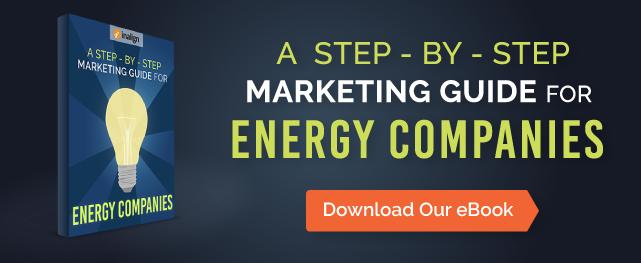Customer churn can be a significant issue for many energy service companies (ESCOs). You acquired your customers because you had the right energy solutions for them. They also likely signed a one-year contract with you. So don’t leave them hanging. After all, it costs six-to-seven times more to acquire a new customer than to retain an existing one.
Why Do Customers Leave?
According to a recent Forbes article, “studies have shown that 68% of customers leave a business relationship because of a perceived attitude of indifference on the part of the company.”
Stated another way, two out of every three customers who leave do so because they feel the company just doesn’t care enough about them. They are dissatisfied with their customer experience. Far fewer customers cite dissatisfaction with a product or price (14%) or being persuaded by a competitor (9%) as a reason for leaving.
How Important is Customer Experience?
According to a Customer Experience Impact (CEI) Report companies can no longer differentiate themselves solely on product or price. “The only option that remains is the customer experience.”
How companies treat customers after the sale is critical. According to the report, “consumers want personal and engaging experiences that develop into relationships.” The CEI Report showed that:
- 86% of consumers will pay more for a better customer experience
- 89% of consumers began doing business with a competitor following a poor customer experience
To reduce customer attrition, energy services companies should focus on areas that will deliver experiences their customers want.
An ESCO Customer Churn Case Study
While reasons for customer attrition and churn rate will differ from company to company, an ESCO churn case study from market researcher FGI provides insight into how customer churn can be reduced in the retail energy industry.
In its study, FGI surveyed 341 current customers and 600 former customers, both residential and commercial, of an ESCO company that was experiencing a 5% churn rate. The study found that:
- Churn was occurring with both residential and commercial customers
- Churn was occurring with every type of energy plan
- Unfulfilled promises made during the sales pitch attributed to customer dissatisfaction
- Customer service was not being used to reduce churn
- Former customers were more comfortable with competitors
Obviously, this ESCO company was not fulfilling a core tenet of exceptional customer experience: always deliver on your promises.
Five Ways ESCOs Can Reduce Customer Churn
1) Set customer expectations
As shown in the ESCO case study above, making promises during the sales phase and not fulfilling them is a sure way to lose customers. That’s why companies need to define their unique value proposition and have a process for how it can be clearly communicated to prospects and delivered to customers.
Energy service companies do need to set customer expectations and ensure that marketing, sales and customer service are aligned around those expectations. Remember, this isn’t the first time your new customer is buying electricity and natural gas. Most likely they previously purchased from a regulated utility. You need to be clear about the added value you provide to customers both during the sales phase and while they are your customer.
2) Personalize customer communications
Marketing automation tools make it easy to segment your customer lists and personalize communications to customers based on their interests and many other factors.
Here are a few examples of ways to stay engaged with your customers:
- Personalize periodic email messages with, for example, their name, company name and a link to content you know they are interested in.
- Empower your customers by continuing to provide relevant information and recommendations that will enable them to succeed. If you know a customer’s main problem is reducing energy consumption, be helpful by providing recommendations to them on this topic.
- Personalize calls-to-action on your webpages. If you have a natural gas customer, don’t show them an offer on your webpages for “How to Switch Natural Gas Suppliers.” Instead, make sure your customers only see calls-to-action for things they need.
- Provide special discounts for products or services your customers need and want. Make incentives available to them via personalized emails or website pages, giving them another reason to stay connected with your company.
3) Provide proactive customer services
Providing an exceptional customer experience requires that you help customers find answers whenever they are looking for information, which is 24/7. Companies can do this by setting up a help center on their website. Tailor the help center around topics and questions that your sales and customer service teams are frequently asked.
Adding a live chat feature to your website and sending emails to customers to alert them when an invoice is due are other examples of proactive customer services.
Importantly, each of these services can be integrated with sales CRM and automated marketing software.
4) Build trust by engaging with customers
According to the CEI Report, 16% of consumers said that companies are antisocial and can’t be found on social networking sites. Many companies find that monitoring social networks is too costly and time consuming even though they know many of their customers use social media.
One solution is to use social media software such as HubSpot’s Social Inbox, which allows you to focus on what’s most important. With Social Inbox you can monitor what your customers and leads are saying about the topics that matter most to your business, and quickly and easily interact with them.
5) Measure and analyze customer key performance indicators (KPI’s)
While it’s important to track marketing metrics such as customer acquisition cost and churn rate, it’s also important to measure and analyze customer satisfaction.
One simple way to do this is with a customer satisfaction survey. Survey results can be analyzed for trends and followed up when individual concerns are raised.
Some online survey software, such as SurveyMonkey, can be integrated with contacts and CRM software to provide your sales and marketing teams with better insight to manage customer experiences.
Conclusion
Energy service companies with high customer churn rates should focus on improving customer experiences. In summary:
- Start by setting customer expectations and a process for ensuring that those expectations are being met.
- Ask customers if you are meeting their expectations and track those results over time.
- Build a customer retention program that focuses on personalized customer communications, proactive customer services and active customer engagement.
- Use automated marketing software and website integration tools to manage and monitor customer experiences and see results as you reduce customer turnover.








